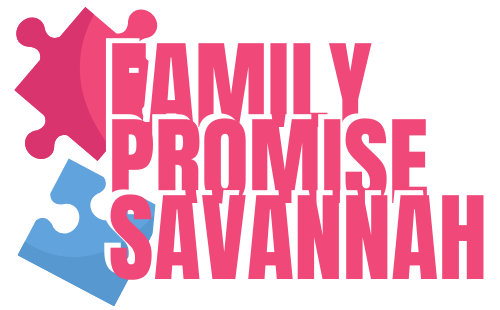Web design is a constantly evolving field, and with the ever-increasing demands for visually appealing and functional websites, it’s crucial for web designers to stay equipped with the right tools. In this article, we will explore the top 10 essential tools that every web designer should use to streamline their workflow, enhance creativity, and deliver outstanding results.
The Importance of Using the Right Tools in Web Design
When it comes to web design, using the right tools can make a world of difference. These tools not only save time and effort but also contribute to the overall quality and efficiency of the design process. Let’s dive into the essential tools that every web designer should have in their arsenal.
Tool #1 – Wireframing and Prototyping
Wireframing and prototyping tools are the foundation of a well-executed web design project. These tools enable designers to create a visual representation of the website’s structure and user interface before diving into the actual development. By outlining the layout and user flow, designers can gather feedback, iterate, and refine their designs effectively.
Benefits of Wireframing and Prototyping Tools
- Streamlined design process: Wireframing and prototyping tools allow designers to quickly visualize and iterate on their ideas, saving time and effort.
- Enhanced communication: With a visual representation of the website, designers can effectively communicate their vision to clients, stakeholders, and developers.
- User-centered design: By testing the user experience through prototypes, designers can identify potential usability issues and make necessary adjustments early on.
Tool #2 – Graphic Design Software
Graphic design software plays a crucial role in creating visually captivating websites. Whether it’s designing logos, illustrations, or UI elements, having a powerful graphic design tool at hand is essential for every web designer.
Enhancing Visual Appeal with Graphic Design Software
- Creating stunning visuals: Graphic design software offers a wide range of features and tools to craft visually appealing designs, ensuring an engaging user experience.
- Customization and scalability: Designers can easily customize graphics and ensure scalability across different devices, maintaining consistency and brand identity.
- Efficient asset creation: With the ability to export assets in various formats, designers can optimize images and graphics for web usage, improving website performance.
Tool #3 – Code Editors and Integrated Development Environments (IDEs)
Code editors and IDEs are essential tools for web designers who work with HTML, CSS, and JavaScript. These tools provide a robust environment for coding, offering features like syntax highlighting, auto-completion, and error detection.
Streamlining the Coding Process with Code Editors and IDEs
- Enhanced productivity: Code editors and IDEs boost productivity by providing shortcuts, code snippets, and real-time error checking, enabling developers to write clean and efficient code.
- Collaboration and version control: Many code editors and IDEs offer integrations with version control systems, allowing multiple developers to collaborate seamlessly and track code changes.
- Debugging and testing: Advanced debugging features help identify and fix code errors, while integrated testing tools facilitate efficient code testing and troubleshooting.
Tool #4 – Version Control Systems (VCS)
Version control systems are crucial for web designers working on collaborative projects. These tools enable teams to manage and track changes to the source code, ensuring efficient collaboration and minimizing conflicts.
Collaborative Development and Efficient Version Control
- Concurrent development: Version control systems enable multiple developers to work on the same project simultaneously, merging their changes seamlessly.
- Rollback and history tracking: With version control, designers can easily revert to previous versions of the code, providing a safety net for experimentation and recovery.
- Conflict resolution: VCS tools help identify and resolve conflicts when multiple team members make changes to the same file, ensuring smooth collaboration and minimizing errors.
Tool #5 – Browser Developer Tools
Browser developer tools are essential for web designers to inspect, debug, and optimize web pages directly in the browser. These tools offer a wealth of features to analyze and enhance the performance of websites.
Debugging and Testing with Browser Developer Tools
- HTML and CSS inspection: Developers can examine the structure and styles of web pages, making adjustments and fixes on the go.
- JavaScript debugging: Browser developer tools provide a debugger to step through JavaScript code, identify errors, and optimize performance.
- Performance profiling: With profiling tools, designers can analyze the loading speed and resource consumption of web pages, optimizing them for better user experience.
Tool #6 – Performance Optimization Tools
Performance optimization is crucial for ensuring fast-loading and responsive websites. Performance optimization tools help web designers analyze and improve various aspects of website performance, such as page speed, file sizes, and caching.
Improving Website Speed and Performance
- Image optimization: Tools for optimizing images reduce file sizes without compromising visual quality, enhancing website loading speed.
- Code minification: Minification tools strip unnecessary characters and whitespace from code files, reducing file sizes and improving website performance.
- Caching mechanisms: Performance optimization tools offer caching techniques to store and serve static resources efficiently, reducing server load and improving response times.
Tool #7 – Content Management Systems (CMS)
Content Management Systems (CMS) simplify website content creation, organization, and publishing. These tools offer intuitive interfaces and robust features that streamline the management of website content.
Simplifying Website Content Management
- User-friendly interfaces: CMS platforms provide intuitive dashboards, making it easy for web designers and content creators to manage website content without technical expertise.
- Scalability and flexibility: CMS tools allow designers to add, edit, and organize content effortlessly, ensuring a seamless user experience as the website grows.
- Collaboration and workflow management: CMS platforms often include features for managing content workflows, enabling multiple users to contribute and review content efficiently.
Tool #8 – SEO Analysis Tools
SEO analysis tools are essential for web designers to optimize websites for search engines and improve organic visibility. These tools provide insights into keyword research, on-page optimization, and overall SEO performance.
Boosting Search Engine Rankings with SEO Analysis Tools
- Keyword research: SEO analysis tools offer keyword research capabilities, helping web designers identify relevant keywords and optimize website content for better search engine rankings.
- On-page optimization: These tools provide recommendations for optimizing page titles, meta descriptions, headings, and other on-page elements to improve search engine visibility.
- Performance tracking: SEO analysis tools monitor website performance in search engine rankings, providing data and insights to adjust strategies and improve SEO efforts.
Tool #9 – Analytics and Tracking Tools
Analytics and tracking tools are essential for web designers to measure and analyze website performance, user behavior, and conversion rates. These tools provide valuable data for making data-driven design decisions.
Gaining Insights and Monitoring Website Performance
- User behavior analysis: Analytics tools help designers understand how users interact with their websites, providing insights into popular pages, user flow, and conversion rates.
- Performance monitoring: These tools track website performance metrics, such as page load times, bounce rates, and exit rates, allowing designers to identify areas for improvement.
- Conversion tracking: Analytics and tracking tools enable designers to set up conversion tracking, measuring the effectiveness of calls-to-action and marketing campaigns.
Tool #10 – Collaboration and Communication Tools
Collaboration and communication tools are vital for web designers who work with clients, stakeholders, and team members. These tools facilitate effective communication, feedback sharing, and project management.
Efficient Collaboration and Communication among Web Design Teams
- Project management: Collaboration tools offer features for task management, scheduling, and file sharing, ensuring efficient project execution and timely delivery.
- Feedback and iteration: Communication tools allow designers to share designs, gather feedback, and iterate on design concepts, promoting collaboration and alignment with stakeholders.
- Remote collaboration: With the rise of remote work, collaboration tools provide virtual workspaces where team members can collaborate regardless of their physical location, fostering seamless communication and productivity.


Leave a Reply